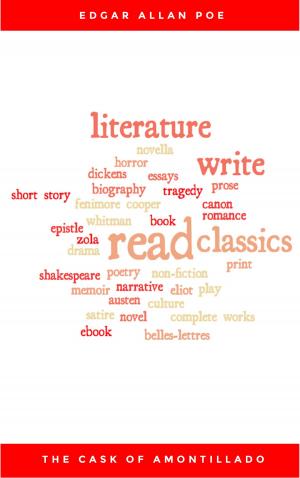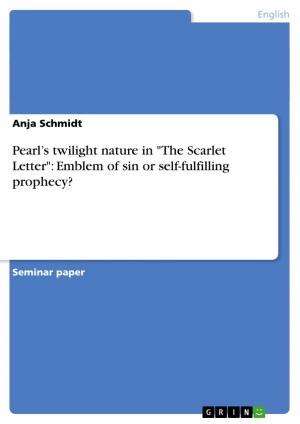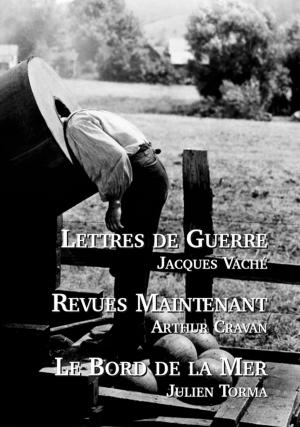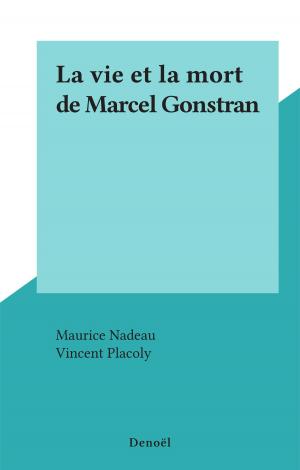| Author: | Sal Owen | ISBN: | 9789163350818 |
| Publisher: | Sal Owen | Publication: | February 6, 2014 |
| Imprint: | Smashwords Edition | Language: | English |
| Author: | Sal Owen |
| ISBN: | 9789163350818 |
| Publisher: | Sal Owen |
| Publication: | February 6, 2014 |
| Imprint: | Smashwords Edition |
| Language: | English |
Few years ago, I got out of bed, one morning, filled with a forceful idea urging me to write a novel on the life of the Nazarene. I never before had the faintest desire to write such a novel. Strangely enough, the time span of the novel was clearly marked in my mind. The book should fill a historic gap in the life-story of The Nazarene, about which we know next to nothing. This period starts with the return of his family from their refuge in Egypt to settle in Nazareth, and ends on the day when The Nazarene spoke out to a gathering by the Jordan River after he had just been baptized. At the age of five the loss of a beloved uncle, threw me into a crisis, and forced me to think of death, justice and the meaning of life at such an early age. My interest in existential questions has remained alive in me ever since. About the age of seventeen, a school-friend and I, decided to study philosophy together, starting with the Greeks. As Socrates had taught us, philosophy should always be discussed and not studied alone, we decided to alternate in the role of presenting and defending the ideas of each Greek philosopher whom we studied, as if they were ones own; while the other one of us should argue against these ideas as best as he could.
Later on, I have always tried to understand the different systems of thinking and beliefs that I had encountered, from within their own framework, including besides the most widespread ones, Krishnamurti, Gurdjieff, Sufism and Zen.
Still, on that morning I wondered, am I the right person to accomplish such a novel in the language that I loved when I read Macbeth and Hamlet in high school. But still English is not my mother tongue, and with the exception of a few poems and academic thesis, I have no experience of writing long narrative let alone a novel in it. All kinds of questions then burst in my head. Would the writing of this novel give me a chance to regain my beloved language and make amends with it? Would it shed a new light on my own life experience and possibly be the venture that I had to undertake to weave the threads of my own life into a kind of tapestry? These questions remained buzzing in my head, when I reached for a notebook and scribbled down the first lines of the prelude. The ending chapter “And he spoke” was outlined in a day or two. It portrayed the moment when Izha decided to speak out to a gathering by the River of Jordan, after he had just been baptised: “A moment of eternal silence reigned, then Izha fanned his glowing eyes into the expectant crowd and spoke.” The first and last pages had found their wording. Fine! I said to myself. But how was I to portray the story of the child who “grew and waxed strong in spirit, was filled with wisdom, and grace was upon him.” I braced myself, and decided to get on with the arduous work. After finishing one chapter, I had no clue about the next one. Yet, the story-line opened itself in vivid visions as if they were cut of a film and all it needed was to be formulated on paper. The first chapter, “Arrival in Nazareth” was followed by “The children played their games”, “School days”, “Birds of clay” and followed by the edifying experience together with the reclusive “Sons of light”.
The mirroring of the vision on paper was a difficult task. The creative image was not easily and readily transcribed into words. Still, page by page, one chapter after another, the story took in due time its shape and found its tone. Questioning is akin to our being, and whenever our knowledge comes short, creativity leaps forth to fill the gaps. I can only hope that the novel as it stands has succeeded in bridging this pivotal gap in the life-story of The Nazarene. Sal Owen
Few years ago, I got out of bed, one morning, filled with a forceful idea urging me to write a novel on the life of the Nazarene. I never before had the faintest desire to write such a novel. Strangely enough, the time span of the novel was clearly marked in my mind. The book should fill a historic gap in the life-story of The Nazarene, about which we know next to nothing. This period starts with the return of his family from their refuge in Egypt to settle in Nazareth, and ends on the day when The Nazarene spoke out to a gathering by the Jordan River after he had just been baptized. At the age of five the loss of a beloved uncle, threw me into a crisis, and forced me to think of death, justice and the meaning of life at such an early age. My interest in existential questions has remained alive in me ever since. About the age of seventeen, a school-friend and I, decided to study philosophy together, starting with the Greeks. As Socrates had taught us, philosophy should always be discussed and not studied alone, we decided to alternate in the role of presenting and defending the ideas of each Greek philosopher whom we studied, as if they were ones own; while the other one of us should argue against these ideas as best as he could.
Later on, I have always tried to understand the different systems of thinking and beliefs that I had encountered, from within their own framework, including besides the most widespread ones, Krishnamurti, Gurdjieff, Sufism and Zen.
Still, on that morning I wondered, am I the right person to accomplish such a novel in the language that I loved when I read Macbeth and Hamlet in high school. But still English is not my mother tongue, and with the exception of a few poems and academic thesis, I have no experience of writing long narrative let alone a novel in it. All kinds of questions then burst in my head. Would the writing of this novel give me a chance to regain my beloved language and make amends with it? Would it shed a new light on my own life experience and possibly be the venture that I had to undertake to weave the threads of my own life into a kind of tapestry? These questions remained buzzing in my head, when I reached for a notebook and scribbled down the first lines of the prelude. The ending chapter “And he spoke” was outlined in a day or two. It portrayed the moment when Izha decided to speak out to a gathering by the River of Jordan, after he had just been baptised: “A moment of eternal silence reigned, then Izha fanned his glowing eyes into the expectant crowd and spoke.” The first and last pages had found their wording. Fine! I said to myself. But how was I to portray the story of the child who “grew and waxed strong in spirit, was filled with wisdom, and grace was upon him.” I braced myself, and decided to get on with the arduous work. After finishing one chapter, I had no clue about the next one. Yet, the story-line opened itself in vivid visions as if they were cut of a film and all it needed was to be formulated on paper. The first chapter, “Arrival in Nazareth” was followed by “The children played their games”, “School days”, “Birds of clay” and followed by the edifying experience together with the reclusive “Sons of light”.
The mirroring of the vision on paper was a difficult task. The creative image was not easily and readily transcribed into words. Still, page by page, one chapter after another, the story took in due time its shape and found its tone. Questioning is akin to our being, and whenever our knowledge comes short, creativity leaps forth to fill the gaps. I can only hope that the novel as it stands has succeeded in bridging this pivotal gap in the life-story of The Nazarene. Sal Owen















